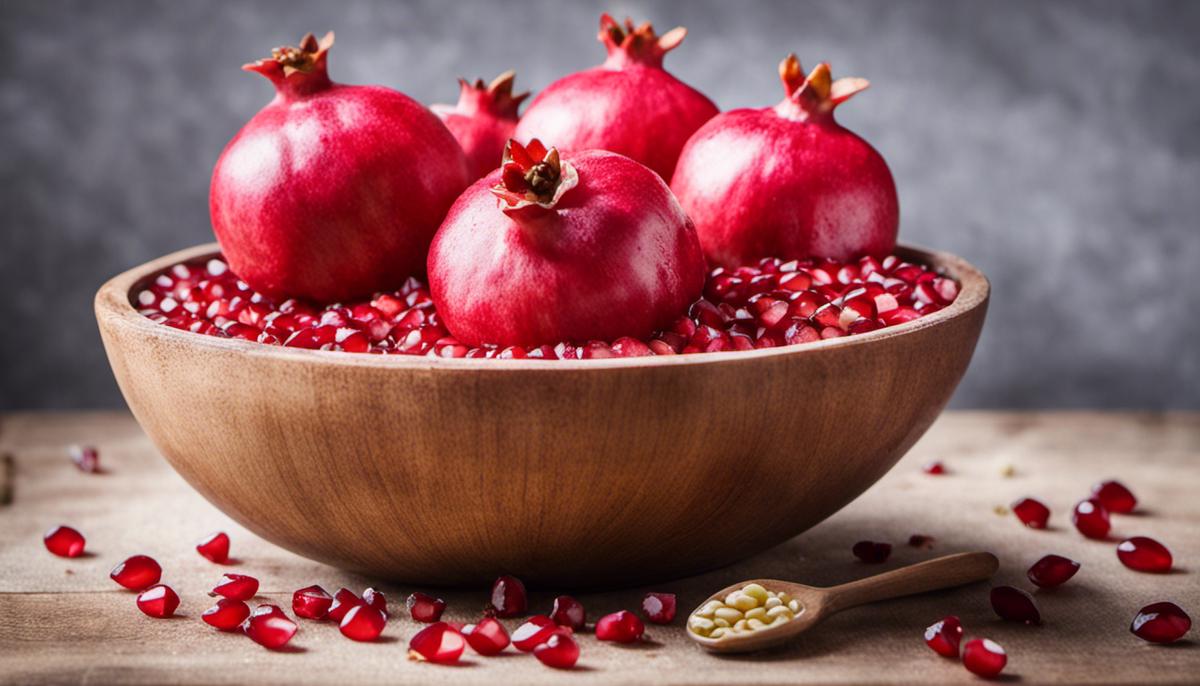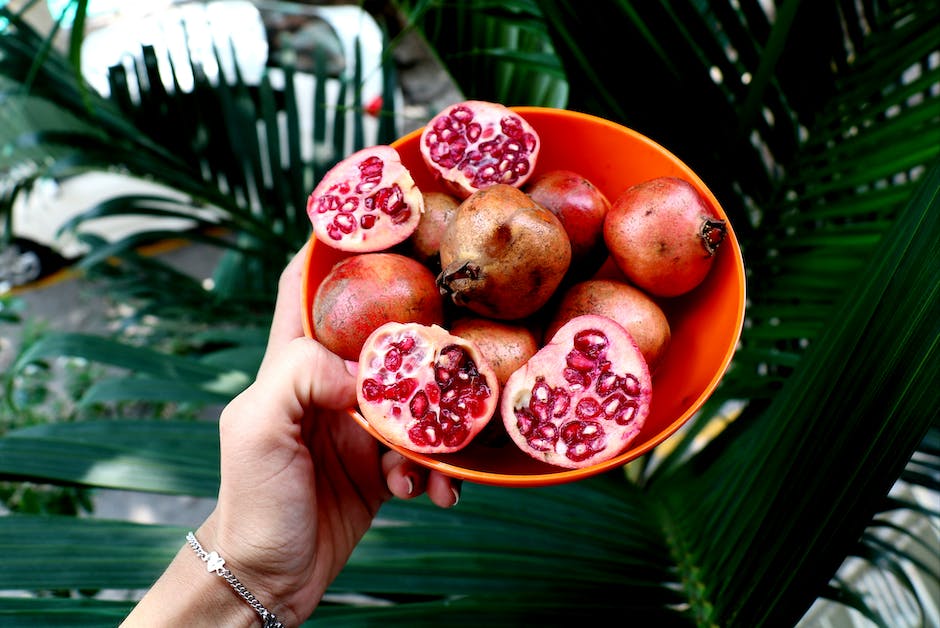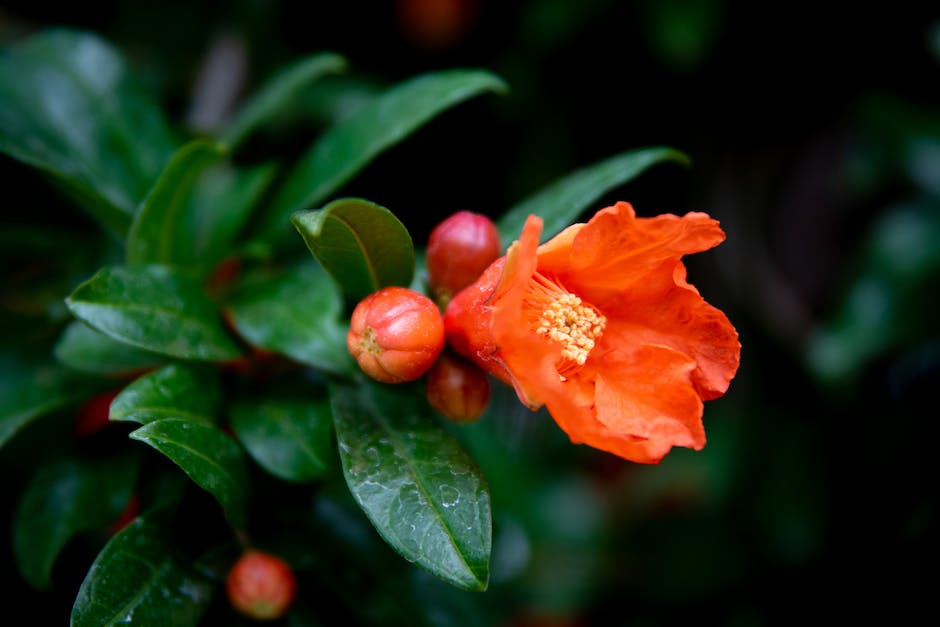Grow Your Own Pomegranate Tree from a Seed

Regarded for its distinct and refreshing flavor, the pomegranate is increasingly recognized not just for its culinary uses, but also its health benefits. However, the joy of consuming this fruit can be further enriched by growing a pomegranate tree from a seed yourself. By enabling this, we delve into a comprehensive guide that takes you through every facet of growing a pomegranate tree at home. We start with the initial phase of understanding how to perfectly extract, clean, and prepare pomegranate seeds for germination, including insights on when to do it and how to store your seeds. Additionally, we also explore the specific needs of a thriving pomegranate tree, from soil, sunlight, and water criteria, to careful planting, watering, and fertilization procedures.
Preparing Pomegranate Seeds
While pomegranates are well-loved for their juicy and aromatic seeds, not everyone knows that with a bit of luck and enough patience, these seeds can also become the origins of one’s very own pomegranate tree at home. So, for those who have the motivation and are ready to roll up their sleeves, here’s a concise guide on preparing pomegranate seeds for planting.
- Extract the Seed:
- Cleanse and Dry:
- Soak the Seed:
- Stratify the Seeds:
- Plant the Seeds:
- Provide Proper Care:
- Transfer to the Garden:
To start, this journey begins with the collection of the seeds. The seeds should be extracted with care from ripe, healthy pomegranates. The more seeds collected, the better the chances of successful sprouting.
Once the seeds have been prudently extracted, they must undergo a cleansing process. This involves rinsing the seeds under cool, running water to remove the pulp and membrane. Thereafter, the seeds should be gently blotted dry using a paper towel.
Next comes a process that may feel counterintuitive after the drying – soaking the seeds. Remember, the objective here is to mimic a wet and wintery atmosphere to kickstart germination. Immerse the seeds in lukewarm water for 24 hours to achieve this effect.
This step is critical in the process as it replicates the natural winter chill pomegranate seeds would experience in the wild. Once soaked, the seeds need to be positioned between two damp paper towels, slipped into a zip-lock bag, and refrigerated. This stratification step commonly takes about 3 to 4 weeks.
After the stratification period elapsed and the seeds have sprouted small roots, it’s time for the exciting part: planting! Prepare small pots filled with well-drained potting soil. Make a hole in the soil about half an inch deep and place the sprouted seed inside. Then, gently cover the seed with soil.
Place the potted seeds in a well-lit area, but keep shielded from direct sunlight which can burn the delicate seedlings. Watering should be frequent but moderate, assuring the soil is kept damp, but not water-logged to avoid root rot.
As the seedlings grow stronger and larger (usually this happens around 3-4 months after germination), one can prepare for transplantation. It’s important to choose a sunny spot in the garden, where the soil drains well for the pomegranate saplings to thrive.
By following these instructions, a pomegranate tree is well underway. Part patience, part labor of love, the process sees nature’s raw, transformational power at play, culminating in a thriving pomegranate tree to be proud of.

Planting and Care
Cultivating Your Pomegranate Plant: An Enthusiast’s Guide to Nurture the New Life
So, you’ve successfully maneuvered through the initial delicate process of planting a pomegranate seed. Your tiny green sprout has emerged from the seed and you might be wondering: what’s next? As green-thumb enthusiasts, we’ll guide you through the initial stages of nurturing this little sprout into a vigorous pomegranate tree.
The journey has just begun. One important component you’ll need is patience. Remember, nurturing a plant is about persistence and fortitude. Your green companion won’t shoot up overnight, and that’s okay.
Step 1: Ideal Environment
To continue growing, pomegranate plants prefer a sunny to semi-shaded spot. They enjoy climates similar to their native home, the Mediterranean. This area provides six to seven hours of sunshine daily. So make sure your plant has plenty of direct sunlight!
Step 2: Watering
When it comes to watering, make sure to do so judiciously. Overwatering can lead to root rot which is detrimental to the pomegranate sprout. Water the plant only when the top one inch of the soil feels dry. Remember, a well-drained soil maintains the ideal moisture level to boost growth.
Step 3: Feeding the Plant
Pomegranate needs a generous supply of nutrients for healthy growth. Applying a slow-release, balanced fertilizer during the growing season will do the trick. A simple 8-8-8 or 10-10-10 NPK (Nitrogen, Phosphorus, Potassium) fertilizer is sufficient. Adjust the amount based on your plant’s needs, but usually, a quarter to half-strength solution once every two weeks should suffice.
Step 4: Pruning
Pruning is not just for mature trees. Developing pomegranate sprouts also need a good trim. This encourages bushier growth, as pomegranates naturally grow in a bushy manner. Successfully pruned pomegranates become structurally strong and yield more fruit. Exciting, isn’t it?
Step 5: Cultivating patience
Finally, one of the most important steps is to cultivate patience. Just like us humans, plants grow at their own pace. Observing your pomegranate sprout’s subtle changes day-by-day is a rewarding experience that broadly engages your attention, develops your care-taking skills, and deepens your understanding of nature’s wonders.
Whether you’re a beginner or a seasoned gardener, there’s always the potential for surprise. Each plant is unique- it bears its leaves, blooms its flowers, and fruits differently. So, as you nurture your pomegranate sprout into a strong and flourishing tree, absorb this experience. Care for it like it’s the only pomegranate on earth and perhaps one day, it will yield the best pomegranates you’ve tasted yet!

Dealing with Common Issues
Growing pomegranates can undeniably be a rewarding venture, considering the fruit’s fresh, tart taste and a myriad of health benefits. However, like any other horticultural endeavor, it comes with its fair share of challenges. Pomegranates may be robust and adaptable, but being knowledgeable about common problems and how to address them can make the difference between a thriving plant and a lingering disappointment.
First, pinpointing the ideal environment for your pomegranate trees is essential. While these plants enjoy basking under the full sun and can tolerate short periods of drought, excessively cool or soggy conditions can spell disaster. If affected by frost damage, the tree may lose entire branches or even minimize fruit production. To prevent this, consider covering the plants with frost cloths or moving them inside if they are in pots during freezing temperatures.
Watering seems straightforward, but improper watering techniques are often the bane of many beginning pomegranate enthusiasts. Too little water can hinder growth, whereas too much can lead to root rot – a stealthy foe that can inflict serious damage before symptoms even manifest. Strive for deep but infrequent watering, soaking thoroughly enough such that water reaches the tree’s roots.
Nutrition should never be overlooked either. A well-fed pomegranate plant is a happy one, exhibiting vibrant foliage and a hearty fruit yield. Lack of nutrients may leave the plant susceptible to pests and diseases, while excess fertilizer can cause foliage burn. Balanced, slow-release fertilizers are often recommended, but it’s best to first get your soil tested to pinpoint the exact nutritional needs of your plants.
The art of pruning comes next. While pomegranate plants may not require such frequent pruning as other fruit trees, strategic trimming can foster a stronger plant capable of bearing more fruit. Bushier growth and increased fruit yield can be achieved by removing crossed branches, cutting back tops, and thinning out suckers.
Like nurturing any relationship, cultivating patience and diligently observing the plant’s growth are key. Pomegranate trees might take a few years to reach full fruiting potential. Instead of seeing this as a drawback, enjoy the fascinating journey of nurturing your pomegranate trees. Keep an eye on any unusual signs – such as wilting leaves, pests, or strange bumps – as they can indicate problems that need prompt attention.
Finally, it’s important to appreciate the uniqueness of each pomegranate plant. Just like humans, every plant can behave differently, even under similar conditions. What works for one may not necessarily work for another. Finding out your tree’s unique quirks and preferences, understanding its growth patterns and adapting, is part of the voyage of discovery that makes cultivating pomegranates a joyous endeavor.
Remember, growing pomegranates isn’t just about the fruit. It’s a journey, a captivating dance between nature and the gardener. Stay patient, stay observant, and stay willing to learn, and you will nurture not only a fruit tree but a lifelong passion. With knowledge, curiosity, and a touch of green thumb, you too can turn these common growing problems into steppingstones toward a more fruitful pomegranate journey.

Progressing through the journey of pomegranate cultivation, the guide assures that you aren’t left unprepared when difficulties emerge. From common diseases to pest control, we equip you with the necessary information to protect your pomegranate tree, as well as critical winterization techniques to withstand harsh weather conditions. Accompanying you from the very moment of holding a pomegranate seed to seeing a fully grown tree in your backyard, this resource allows your pomegranate cultivation project to be as fruitful as possible. Engage in this horticultural adventure and enrich yourself and your surroundings by growing your own wonderful pomegranate tree.



